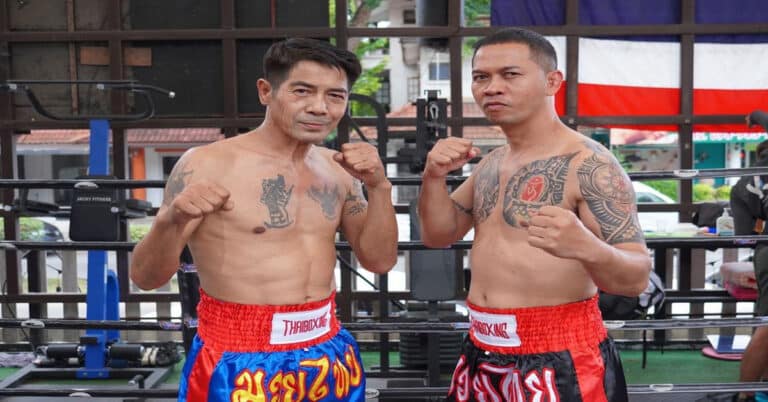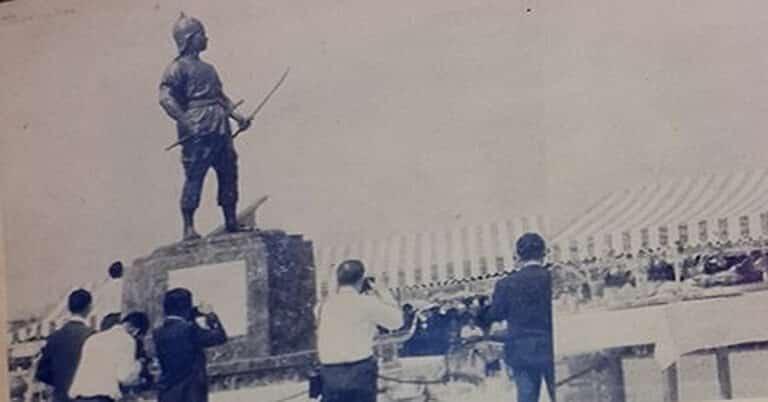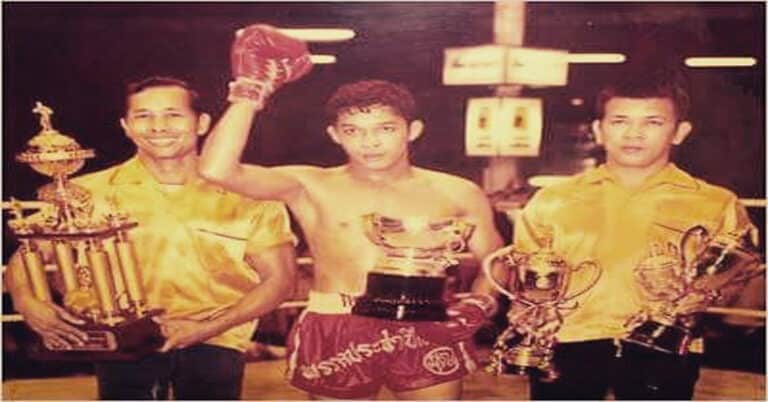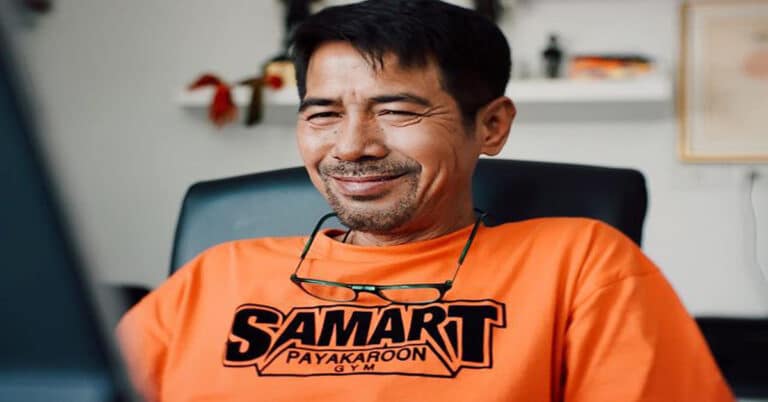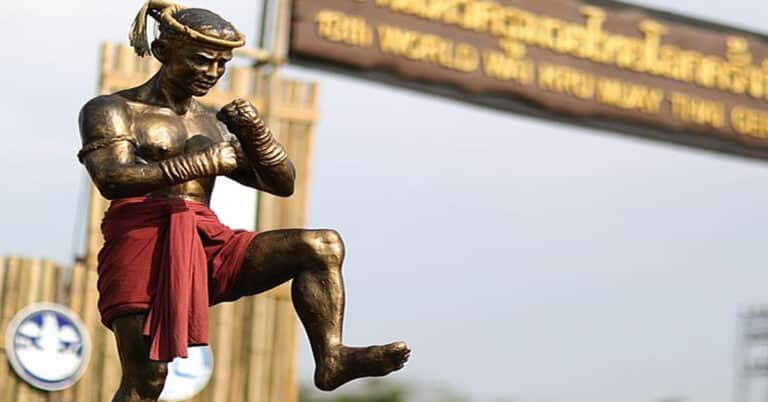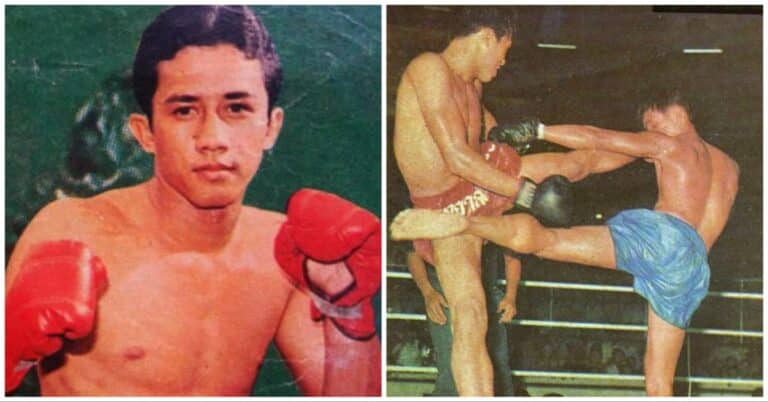Nong Toom: The Beautiful Boxer
Parinya Charoenphol, commonly known by her nickname Nong Toom, is a Thai boxer, actress, and model who has garnered international attention for her unique life story. Nong Toom is a transgender woman who gained prominence in the world of Muay Thai.
When we discuss transgender athletes in combat sports, the name Parinya Charoenphol, or Nong Toom, rarely makes the list despite her groundbreaking career. This enigmatic figure rose to prominence in the late 1990s as a Kathoey— a Thai term for transgender women who have not undergone gender-confirming surgery.
Even as she excelled in the art of eight limbs, Nong Toom struggled with her gender identity. Her decision to openly live as a transgender woman was groundbreaking, especially in a male-dominated sport like Muay Thai.
Nong Toom is often cited as a role model within the LGBTQ+ community. Her story is seen as one of courage and determination, inspiring others who are struggling with their own identities.
| Birth Name: | Parinya Charoenphol |
| Thai Name: | ปริญญา เจริญผล |
| Date of Birth: | 9 June 1981 |
| Place of Birth: | Chiang Mai, Thailand |
| Nickname: | Toom, Nong Toom, Parinya Kiatbusaba |
| Occupations: | Muay Thai boxer, Actress Model |
Who is Nong Toom?
Parinya Charoenpho AKA Nong Toom was a Muay Thai fighter. While competing at the iconic Lumpinee Stadium, this athlete would fight wearing makeup and dressed in traditionally female clothing. This was during the late 1990s. However, was not a hobby for her, it was her career.

The combat sports media was enthusiastic and excited about this fighter. At the age of just 16, Nong Toom would defeat larger opponents, men, and give them a little kiss afterward, garnering much attention. The image of a woman defeating a man and then kissing him actually helped grow audiences in Lumpinee Stadium during this time. Overall, Nong Toom would compete in dozens of bouts professionally.
She had her first bout at just the age of 12, cementing what her future career would be; a lifetime in combat sports. Originally, Nong Toom came from a nomadic family who would eventually settle down in Chiang Mai province. To help support the family she became a Buddhist monk, as is tradition in Thailand. Ultimately she was expelled.
Nong Toom began fighting in Muay Thai, at a fair, to support her family. Fighting in Muay Thai as a child for the money for one’s family is a very typical story. Despite jeers from the audience calling her a ‘sissy’ she was victorious in the fight and took home some much-needed money for her family. In her first matchup, she brought home 500 baht, less than $15 USD for the match. Many current Muay Thai stars such as Rodtang and Stamp Fairtex both began in Muay Thai to support their family.
In addition to supporting her family through her fight career, she would also save money to eventually be able to afford gender-affirming surgery. She succeeded in this, in 1999, she announced her retirement to undergo gender-confirming surgery but returned to professional fighting in 2007.
As for choosing a fighting sport to make her livelihood, she explained:
“I don’t equate femininity with weakness. I was born into poverty and there weren’t many ways I could earn a lot of money. I also knew that I had to be strong, and to protect myself and the people I loved. I was born into poverty and there weren’t many ways I could earn a lot of money. I don’t think about gender. I think about winning.”
What is a Kathoey?
She was known as a Kathoey. The term “Kathoey” is specific to Thailand and refers to a male-to-female transgender individual or an effeminate gay male. While the term is often translated into English as “ladyboy,” it is important to note that “Kathoey” carries cultural and social connotations that may not fully align with Western understandings of transgender identity or gender non-conformity.
A Kathoey may or may not have undergone hormone replacement therapy or gender-confirming surgeries. Traditionally, Kathoeys have had a visible role in Thai culture, and they can be found in a variety of professions, including entertainment, retail, and beauty salons, among others. However, they often face social stigma and legal disadvantages, as Thai law does not fully recognize their gender identity.
In summary, “Kathoey” is a complex term reflecting a specific cultural understanding of gender and sexual identity in Thailand. It does not have a direct equivalent in Western gender classifications, and its interpretation can vary within Thai society itself.
Life in the Public Eye
Given the current trending discourse on trans athletes in the West, it will not come as a surprise that Nong Toom was a slightly controversial figure. Her unique persona—wearing makeup and performing a traditional dance before fights—made her a compelling figure not only within Thailand but also internationally.
Her rise was not without its critics. Some traditionalists within the Muay Thai community and broader Thai society viewed her participation as a blemish on a sport they considered sacred.
The director of the film Beautiful Boxer, Ekachai Uekrongtham, discussed this in an interview. He said:
“When Nong Toom first broke into the scene, people thought that she gave muay Thai a bad name. Then when she revealed herself as a very good [fighter], she earned respect, but still a lot of people believe that she is tarnishing the image of something sacred. [Muay Thai] evolved as our ancestors invented ways of turning our bodies into weapons to fight the Burmese, and it is more than just a sport. It’s a sacred tradition that is at the heart of our national identity.”
Even as she proved herself a capable fighter, this sense of her somehow ‘defiling’ a national treasure persisted. Her talents were undeniable; her critics could not ignore her skill and success in the ring. But her achievements did little to temper the criticism that she was an affront to Thai culture, with some considering her mere presence in the sport a form of sacrilege.
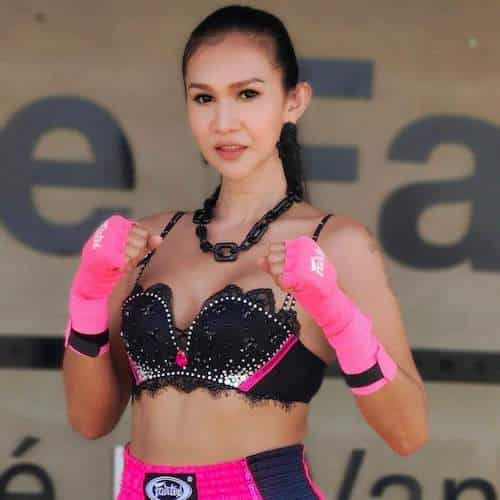
Facing Japan’s top female athlete Kyoko Inoue was another defining moment in Nong Toom’s career. Although she won, she was confronted and slapped by a young Thai woman. This clash helped epitomize the cultural conflict between traditional Thai values and the emerging role of trans athletes in sports.
Thus, Nong Toom became a polarizing figure: a source of inspiration for many, but also a point of contention for those who questioned her place in a sport so closely tied to Thai national identity.
Nong Toom didn’t see her gender identity as incompatible with her love for Muay Thai. She believed the sport encompassed more than just fighting; it encapsulated a piece of Thai culture and history for her.
Beautiful Boxer
In 2003, the film Beautiful Boxer was released by director Ekachai Uekrongtham. It is a biographical film of Nong Toom, loosely based on her life. It delves into her early years, her internal struggle with her gender identity, and the challenges she faced while participating in a traditionally masculine and culturally significant sport as a transgender woman. The film covers a range of themes, including personal identity, courage, acceptance, and cultural tension.
The director explained his motivations, he said:
“She set out to master the most masculine activity in order to achieve total femininity. I thought it was fertile ground for exploration.”
Portraying Nong Toom in the film was Asanee Suwan, a male Muay Thai fighter and actor by the name of Asanee Suwan. He said:
“Before I met her, I thought that Nong Toom was putting on makeup as a gimmick to make her famous. Now I can understand what she had to go through and how brave she has had to be.”
Nong Toom offered her thoughts on the film. In an interview, she explains:
“It’s like looking at a mirror that shows images of you in flashback. But I could never imagine someone making a movie about my life as I always think that films are about heroes and I’m not a hero. The film is life’s greatest gift to me so far because it makes it easier for people to understand [trans people], and on a personal level it has helped me to be accepted as a person.”
The film has been praised for its cinematography and the performances of its actors, particularly that of Asanee Suwan. It has also received numerous awards at various film festivals and has been positively reviewed for its emotional depth and social commentary.
Through a compelling narrative and strong performances, Beautiful Boxer brings Nong Toom’s incredible story to a larger audience, serving as both a window into a unique life and a mirror reflecting broader issues of gender, identity, and culture.
Final Thoughts
Nong Toom pushed the cultural norms and boundaries before the turn of the century. Nong Toom is more than just a fighter or an entertainer. She is a symbol of resilience and transformation, challenging traditional norms while elevating a sport deeply ingrained in Thai culture. Through her struggles and triumphs, Nong Toom has etched her legacy as a true trailblazer in sports and LGBTQ+ activism.


